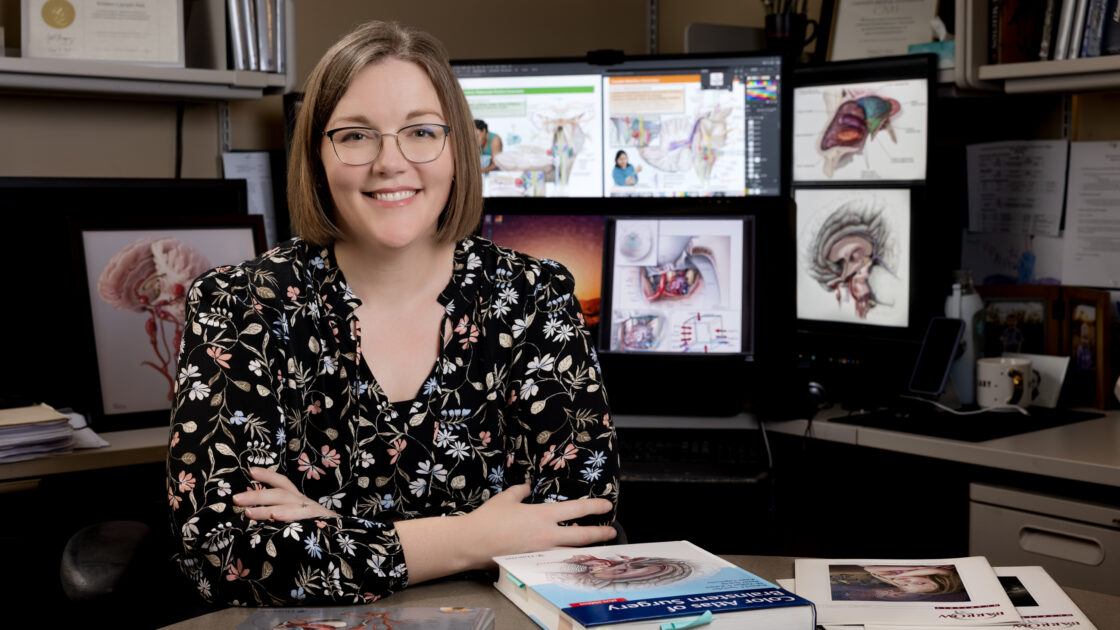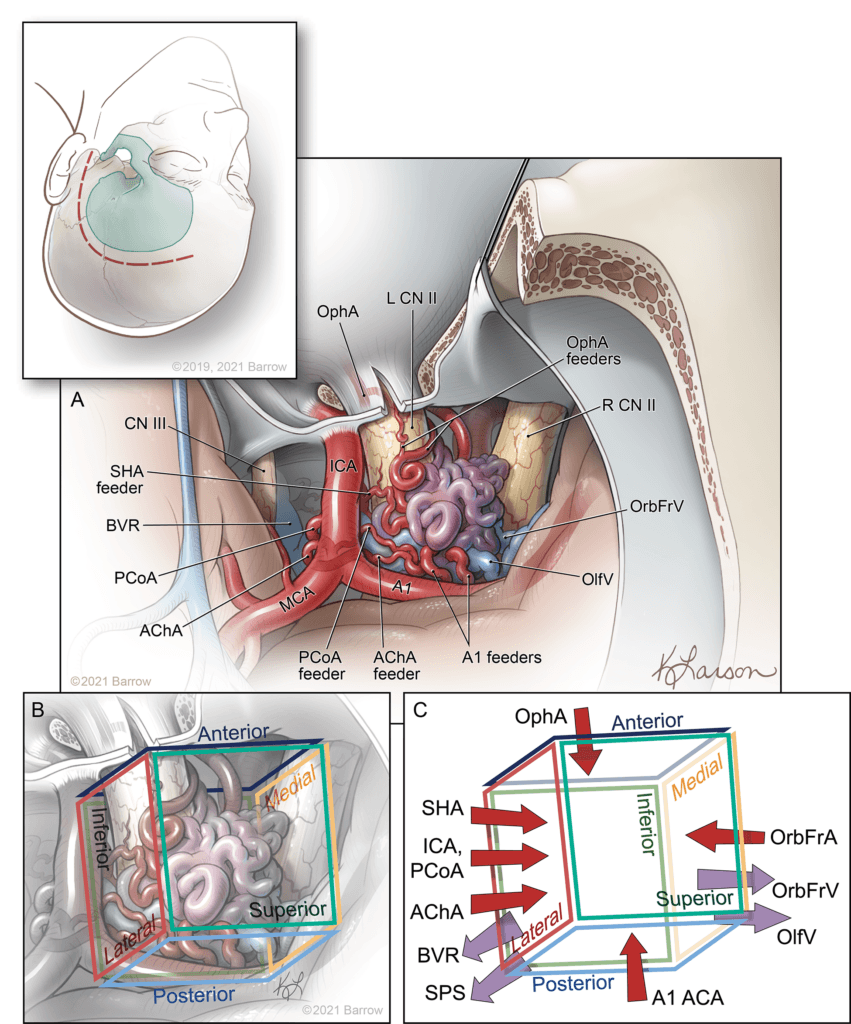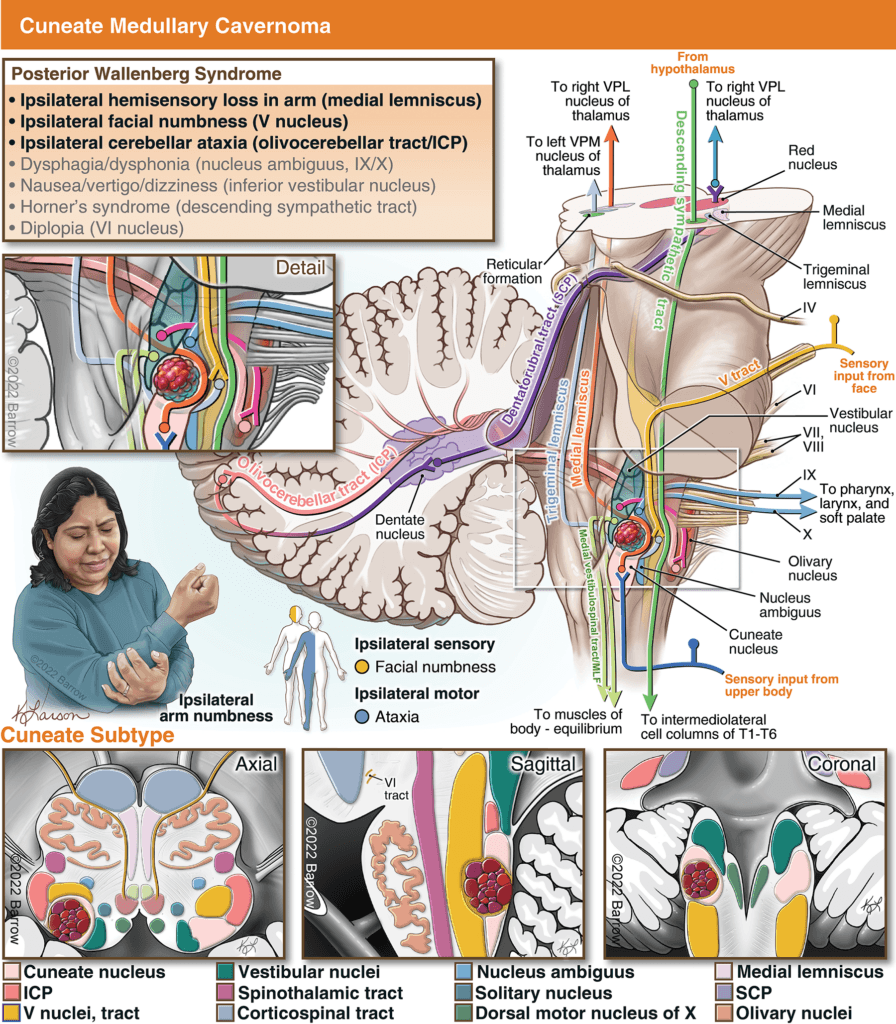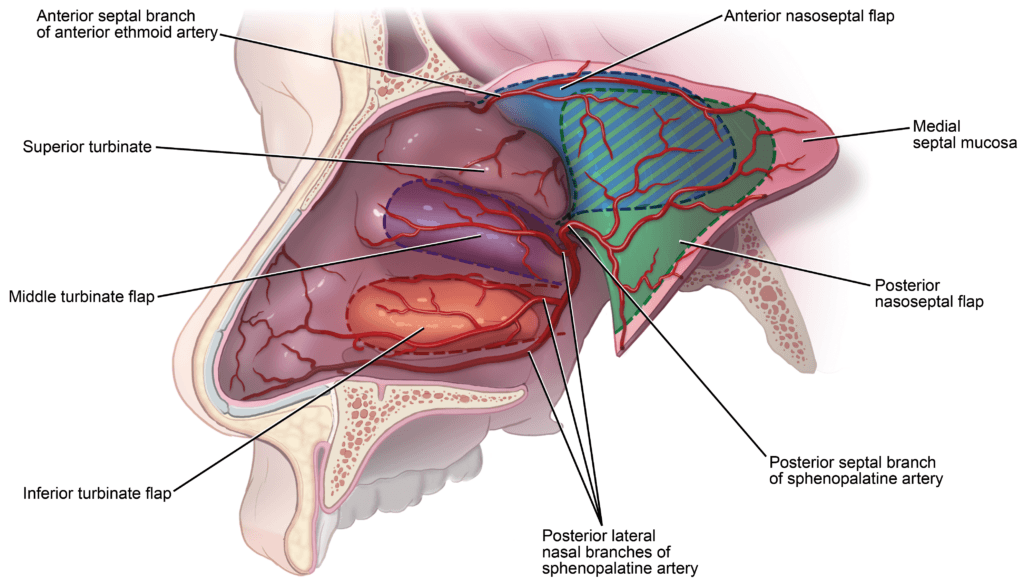
#TheMindBehind Neuroscience Publications: Kristen Larson Keil
When her high school art teacher asked about her career plans, Kristen Larson Keil said she hoped to become a doctor. Having noticed Kristen’s passion and talent for art, the teacher asked if Kristen had heard of medical illustration.
“I hadn’t; it’s a tiny field,” Kristen recalled. “She put me in touch with a former student of hers who gave me the background on the field, and it was this perfect combination of everything I loved.”
Becoming a Medical Illustrator
From there, Kristen followed a straightforward path to a career in medical illustration. She earned her Bachelor of Arts in Biological and Premedical Illustration from Iowa State University and her Master of Science in Medical Illustration from the Medical College of Georgia.
A month after graduating with her master’s degree, she began working in Neuroscience Publications at Barrow Neurological Institute. About 17 years later, Kristen is at the helm of the department.
She describes herself as “one of the lucky ones” for learning about the field before starting college. Oftentimes, people complete an undergraduate degree in either art or science before stumbling upon this intersection of the two. That usually means returning to school to complete prerequisites before applying to a graduate program in medical illustration, which resembles the first two years of medical school.
“Not the clinical side of things,” Kristen clarified, “but we take human gross anatomy, pathology, histology, neuroanatomy. We also do surgical sketching, illustration, animation, and storytelling courses.”
A Mind for Discovery
Kristen has loved science since childhood, but she didn’t have a particular interest in neuroscience when she first arrived at Barrow. She had applied for the job at the encouragement of one of her graduate school professors, the late Steve Harrison, who had served as the Institute’s first medical illustrator.
Since joining Barrow, though, Kristen has become fascinated by the brain and has developed an affinity for drawing abnormal tangles of arteries and veins known as arteriovenous malformations, or AVMs.
“It’s really kind of struck my imagination,” she said. “With the brain, there is so much we don’t know yet. I’ve been drawing brains for 17 years, and it seems like it might get kind of boring, but it’s never the same thing—never the same discovery.”
Having a front-row seat to those discoveries through her contributions to academic papers is one of Kristen’s favorite aspects of the job. She also appreciates being part of such a well-supported publishing department, which not every hospital offers. When fully staffed, Neuroscience Publications houses a team of 18 employees, including illustrators, animators, video editors, copy editors, production and editorial coordinators, and a technical artist.
“We have such an amazing team in Neuropub—just the cream of the crop, the best of the best, in all facets of the department,” Kristen said.
Thinking Like an Artist
Preparing a paper for publication is a department-wide effort. Kristen’s role begins with a request for an illustration from, typically, the lead author on the manuscript. She’ll read the draft, if available, and then delve further into the anatomy or procedure using resources like surgical video.
She’ll first conceptualize the illustration with a rough sketch and then refine it based on the author’s feedback. When Kristen began working in the field in 2006, she drew every illustration in pencil and scanned it into the computer to add color with Photoshop. Today, she illustrates directly onto the screen of a special drawing tablet.
The amount of time she spends on an illustration varies. She may churn one out within hours to meet a tight deadline, or she may spend weeks perfecting an in-depth figure if time allows.
I have long believed that creating new ideas and insights is one of our most important purposes in academic medicine, but new concepts often require strong artwork to bring them to life. This is what Neuropub does for us here at Barrow, and Kristen has been at the center of medical illustration both here and on the national stage.
Michael T. Lawton, MD, Barrow President and CEO
Once Kristen completes her artwork, she sends it off to the department’s production editors for copyright and formatting. The editors review any text on the figure, and the editorial coordinators take care of submission to the journal along with the manuscript. Once accepted, an article may be published online within a couple of months. It usually takes about a year for it to appear in print.
Kristen believes having a full-service, in-house publishing department contributes to the Institute’s high academic output. Neuroscience Publications not only ensures journals receive a complete and polished manuscript, but the department also saves the authors time by handling the coordinating involved in the submission process.
“I have long believed that creating new ideas and insights is one of our most important purposes in academic medicine, but new concepts often require strong artwork to bring them to life,” said Barrow President and CEO Michael T. Lawton, MD. “This is what Neuropub does for us here at Barrow, and Kristen has been at the center of medical illustration both here and on the national stage.”
Memorable Projects
A search of the Neuropub database shows that Kristen has completed 1,556 illustrations for Barrow. The Association of Medical Illustrators has recognized her work over the years with eight awards.
When asked which projects Kristen is most proud of, two come to her mind. One is the “Color Atlas of Brainstem Surgery,” a textbook authored by Robert F. Spetzler, MD, who was preparing to retire from neurosurgery and his position as President and CEO of Barrow.
The textbook needed to be finished in time for Dr. Spetzler to sign copies at the American Association of Neurological Surgeons meeting happening before his retirement, condensing a typical three-year project into two years, Kristen said. She also had her first baby in the middle of the project.
“Working with Kristen on our ‘Color Atlas of Brainstem Surgery’ was a real pleasure,” Dr. Spetzler said. “Her attention to detail and beautiful, artistic reproductions of the complex surgical anatomy allowed our readers the ability to visualize and understand the operative techniques and corridors we were trying to project. She is talented, a delight to work with, and a true professional.”
Kristen also takes pride in her ongoing work for “Seven Cavernomas,” a collection of Journal of Neurosurgery articles led by Dr. Lawton and inspired by his “Seven” textbook trilogy.
“That’s been such a fun, collaborative project,” she said, adding that she meets with Dr. Lawton and fellow medical illustrator Peter Lawrence weekly. “We’ve gotten to really dig into the details and spend the time and effort that sometimes you don’t get to spend on projects.”
Dr. Lawton said he often thinks of Kristen as the modern-day Frank Netter, a doctor-turned-medical-illustrator who earned the nickname “the Michelangelo of Medicine.”
“Kristen’s artwork captures elements of a clinical condition, like brainstem cavernomas, and builds them into an unforgettable image that makes the reader understand,” Dr. Lawton said. “The works she produced for ‘Seven Cavernomas’ combine brainstem circuits, clinical symptoms and signs, and brain anatomy with a clarity and beauty that Netter would be proud of—I certainly am.”
The Future in Mind
Kristen will have to scale back her illustrating to take on new managerial responsibilities, but she has no plans to retire her stylus.
“I’m ready for a little bit of a change, but I’m hoping to still work on illustration projects and help out where needed,” she said.
As for leading the department, Kristen feels fortunate to follow in the footsteps of Mark Schornak. He recently retired after nearly 30 years of working in Neuroscience Publications.
“He set the precedent that we are always keeping an eye on the future and trying to stay ahead of the curve on technology,” Kristen said.
She aims to continue that culture and to find new ways to increase the department’s output and expand their offerings. She also sees potential for Neuropub to help with the education efforts of the new Barrow Global initiative.
“It’s really unusual to have a department like ours, especially one of this size, at a hospital,” she said. “My hope is to continue building on the foundation that people like Shelley Kick and Mark have built, with the expectation of excellence.”
Advice for Aspiring Illustrators
The path to medical illustration doesn’t have to be as linear as Kristen’s, but she does have a couple of tips for artists who hope to join the field. One is to reach out to medical illustrators in the workforce for mentorship; Kristen said the Association of Medical Illustrators is a good place to start.
Her other piece of advice is to draw—a lot.
“Especially from life,” she said. “Being able to transcribe what you see in front of you onto the page, that’s the main key. And never stop learning.”



